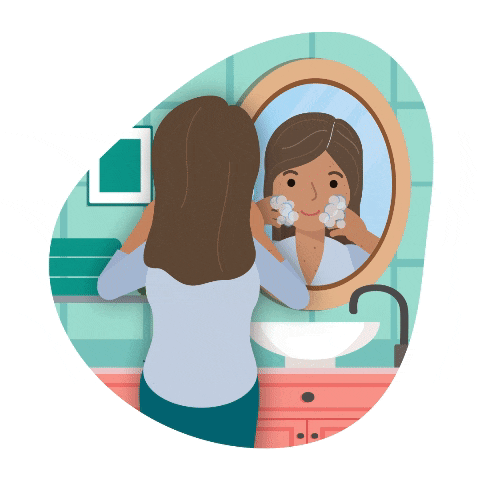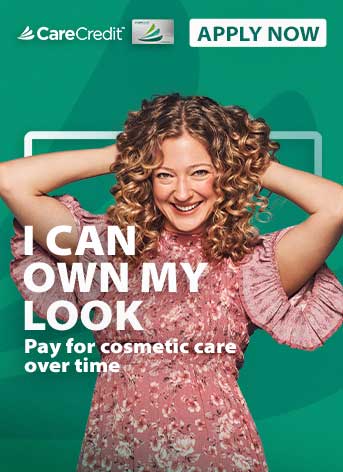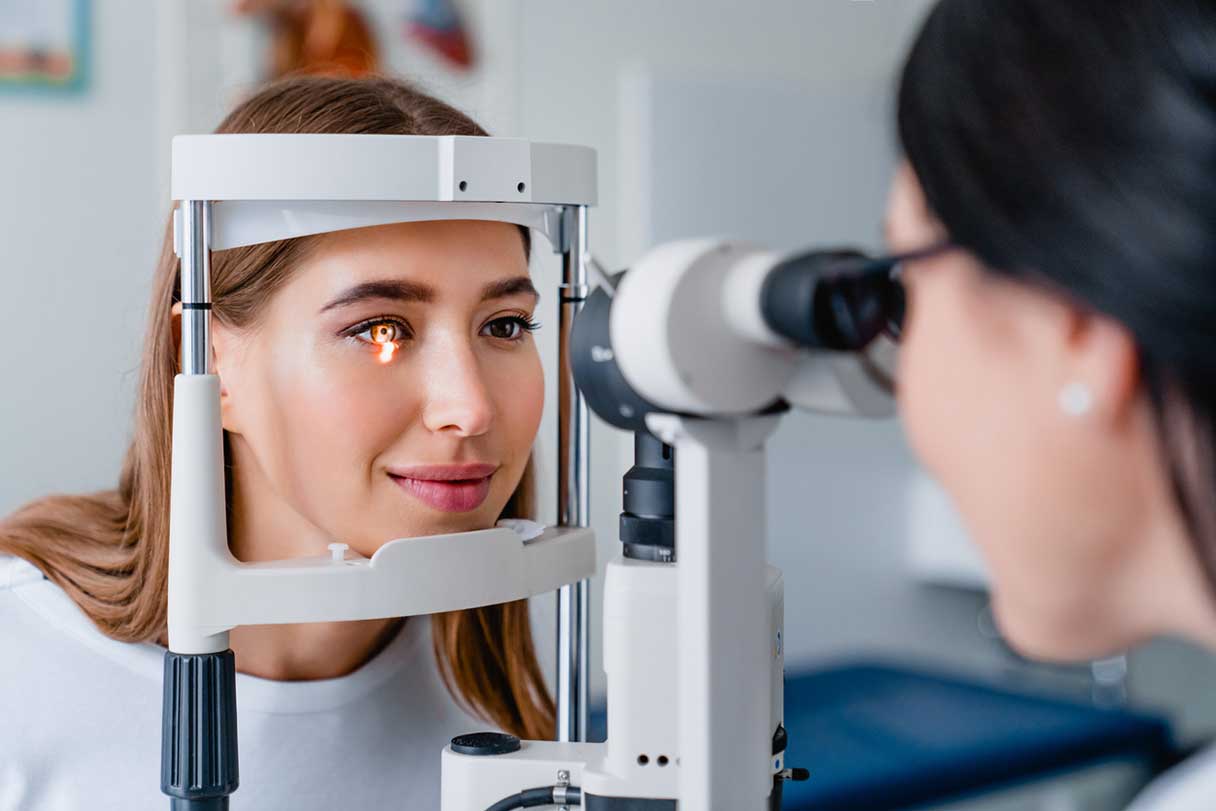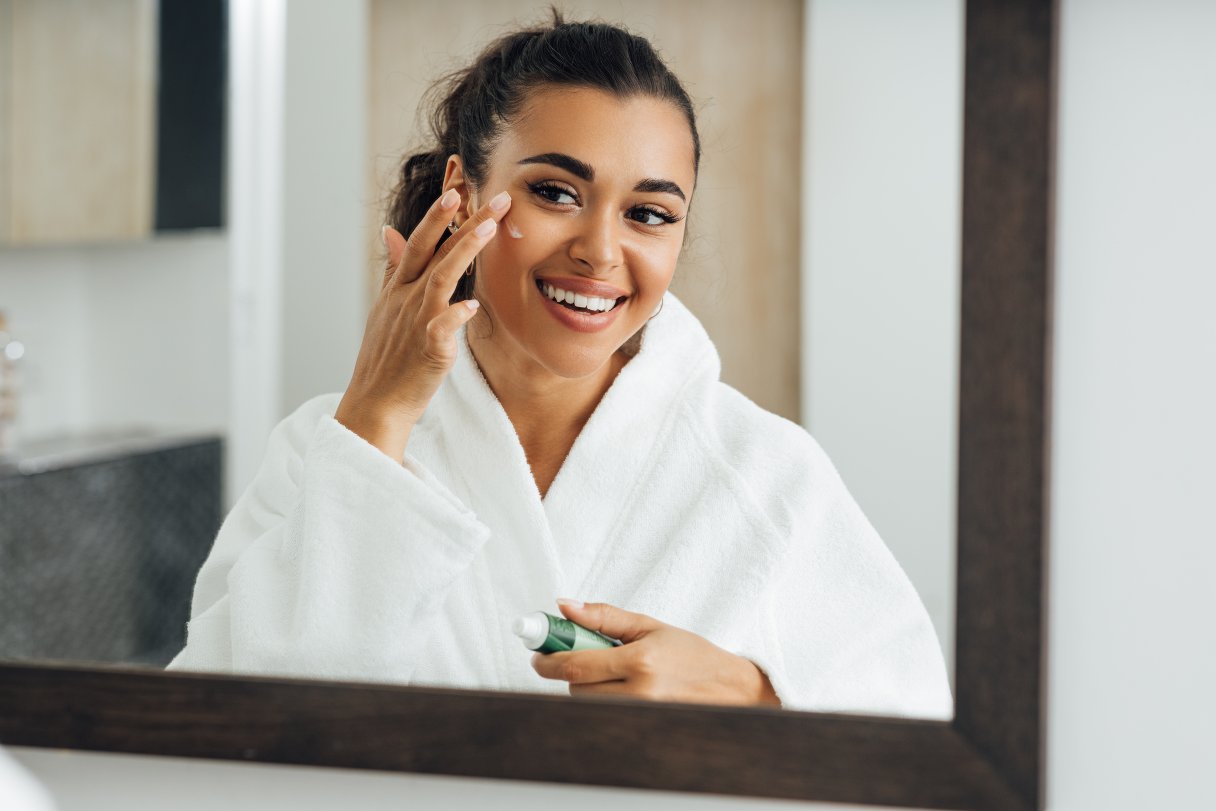
If you're noticing more dark spots on your skin with each passing year, it's probably solar lentigo, more commonly known as age spots, sun spots or liver spots. While these flat, dark patches don't have anything to do with your liver, your age and sun exposure can play a role in their development.
Age spots develop on sun-exposed skin and become more common as we age, affecting around 20% of people with white skin under the age of 35 and as many as 90% over 60.1 They're less common on dark skin but still possible.2
Age spots do not require treatment for medical reasons, but treatments are available to get rid of age spots if they bother you.
What Are Age Spots?
Age spots are small, painless areas of skin that are darker than the rest of your skin. They look similar to freckles.3 Age spots are usually flat and round or oval, tan to dark brown in color, and often found on sun-exposed areas such as the face, arms and hands.3
Causes
Age spots are caused by an increase in melanin, which is a substance in your skin that's responsible for pigment. In areas where an overabundance of melanin gathers, dark spots can form.
A few things appear to contribute to increased melanin production and the formation of age spots, including:
- UV light exposure from the sun or tanning beds
- Aging
- Being fair-skinned
- Certain medical treatments, such as radiation therapy3
How to Get Rid of Age Spots
There are a few different ways to get rid of age spots, though some are more effective than others.
Home remedies for age spots
You won't be able to get rid of age spots with home remedies, but you may be able to fade them so they're less noticeable. Here are some popular topical home remedies for age spots:4
- Lemon juice, which contains citric acid and antioxidants like vitamin C, may help bleach skin.
- Apple cider vinegar contains acetic acid, which research says may lighten dark spots.
- Aloe vera has aloin, a naturally occurring chemical that may help treat hyperpigmentation.
- Green tea appears to have a lightening effect when applied to the skin.
- Papaya contains alpha hydroxy acid which can help exfoliate skin and reduce discoloration.
- Yogurt contains lactic acid, another alpha hydroxy acid with exfoliating properties that may lighten age spots.5
Over-the-counter treatments
There are topical treatments available over the counter that can help fade age spots when used consistently over several weeks or months. Some are also available in prescription strength through a dermatologist.6
Look for products containing these ingredients:
- Hydroquinone
- Retinol
- Vitamin C
- Glycolic acid
- Kojic acid
Medical treatments
Dermatology and cosmetic treatments will provide the fastest and most dramatic results if you're looking to get rid of age spots. Here are some options available:
| Medical treatment | How it works | Average cost |
|---|---|---|
|
Chemical peel |
Removes outer layers of skin using a chemical solution |
$519 |
|
Microdermabrasion |
Gently sands the outer layer of skin to remove discoloration and sun damage |
$167 |
|
Cryotherapy |
Freezes age spots with liquid nitrogen, causing the skin to peel away |
$100 to $500 |
|
Laser resurfacing |
Removes the outer layer of skin using short, concentrated pulses of light |
$1,445 to $2,509 |
Chemical peel
A chemical peel removes the outer layers of the skin using a chemical solution. They're typically used on the face, but can be used on the neck and hands to treat age spots and other signs of sun damage. The average cost of a chemical peel is $519, but this can vary depending on geographical location and how much time or effort is required to achieve the desired results.7
Microdermabrasion
Microdermabrasion uses an abrasive instrument to gently sand the outer layer of skin, removing areas of discoloration and sun damage. The average cost of microdermabrasion is $167, not including related fees, and the cost can vary depending on the qualifications, experience and location of the provider.8
Cryotherapy
Cryotherapy, also called cryosurgery, fades age spots by freezing them with liquid nitrogen, causing the skin to peel away. It costs between $100 and $500 depending on the number and size of the age spots being treated and the geographical location of the provider.9
Laser resurfacing
Laser resurfacing uses short, concentrated pulses of light to remove the outer layer of skin. The skin below the surface heats up and stimulates collagen growth, so along with getting rid of age spots, it can also improve other signs of sun damage and aging, such as fine lines and wrinkles.
The cost varies depending on whether you have non-ablative or ablative laser resurfacing. The average cost is $1,445 for non-ablative and $2,509 for ablative. The provider's location, experience and any related expenses can also influence the cost.10
Treatment Considerations
Here are some things to consider when choosing a treatment for your age spots.
Skin type
Some treatments may be better suited to your skin type. This is especially important if you want to try to get rid of age spots on your own. For instance, hydroquinone and other ingredients in skin lightening treatments can cause blisters and other skin reactions in sensitive skin.11 If you have sensitive skin, are acne-prone or have any other skin concerns, talk to a dermatologist about the best options for your skin type.
Treatment cost

The cost of treating age spots can vary significantly — from a few dollars for a home remedy or cream to a few thousand for medical treatments — depending on the treatment and number of spots you have. Consider the up-front as well as the long-term cost of treatment.
How long it takes
How long it takes to get rid of age spots varies between treatments. If you're looking for quick results, medical treatments work much faster than creams and home remedies.12
The right provider
An experienced, board-certified doctor such as a dermatologist, cosmetic surgeon or plastic surgeon has the training and knowledge to help you choose the best treatment for your skin type. They can also identify signs of skin cancer that are easy to miss by an untrained eye.12
Tips to Prevent Age Spots
You can't prevent aging, but the following efforts can help you prevent age spots.
Protect your skin from the sun
Sun exposure is the biggest contributing factor when it comes to age spots. Here's how to protect your skin and prevent age spots:
- Wear protective clothing when outdoors, such as wide-brimmed hats to protect your face and neck, and long sleeves and pants to protect your arms and legs.
- Apply a broad-spectrum sunscreen with an SPF of 30 or higher whenever you go outdoors.
- Limit time in the midday sun; its strongest between 10 a.m. and 4 p.m.13
Avoid tanning beds
Artificial sunlight from tanning beds speeds up melanin production just like real sun rays. This means indoor tanning can cause age spots and premature aging, as well as increase the risk of skin cancer just like the real thing.14
Maintain a healthy lifestyle
Maintaining a healthy lifestyle won't specifically help prevent age spots, but it can help keep your skin healthy.
A poor diet, dehydration and not getting enough sleep, along with smoking can all have a negative impact on your skin's collagen production and elasticity, and lead to premature aging.
Keep your skin — and the rest of you — healthy by:15

- Getting at least seven or eight hours of sleep every night
- Drinking eight to 10 glasses of water a day
- Eating a healthy diet with foods high in antioxidants
- Avoiding smoking
- Managing your stress
- Getting regular exercise
- Staying on top of your skin care routine to keep your skin clean and moisturized
Age spots aren't painful or dangerous, but that doesn't mean you have to live with them if you don't want to. A dermatologist or cosmetic surgeon can help you choose the right treatment for your skin. Sun protection and a few healthy lifestyle changes can help prevent age spots from returning.
CareCredit Credit Card Financing for Dermatology
The CareCredit credit card makes it easy to pay for dermatology visits, over-the-counter treatments and prescription medications at locations within the CareCredit network.* Start enhancing your skin today and find a dermatologist near you that accepts CareCredit. Continue your wellness journey by downloading the CareCredit Mobile App to manage your account, find a provider on the go and easily access the Well U blog for more great articles, podcasts and videos.
In addition to dermatology, you can also use your CareCredit credit card for other cosmetic procedures, dentistry, pet care, vision, hearing, health systems, dermatology, pharmacy purchases, spa treatments and so much more within the CareCredit network. How will you invest in your health and wellness next?
Author bio
Adrienne Santos-Longhurst is a writer who has been covering health and lifestyle for almost two decades. Her work has appeared in Healthline, Insider, Medical News Today, and more.









